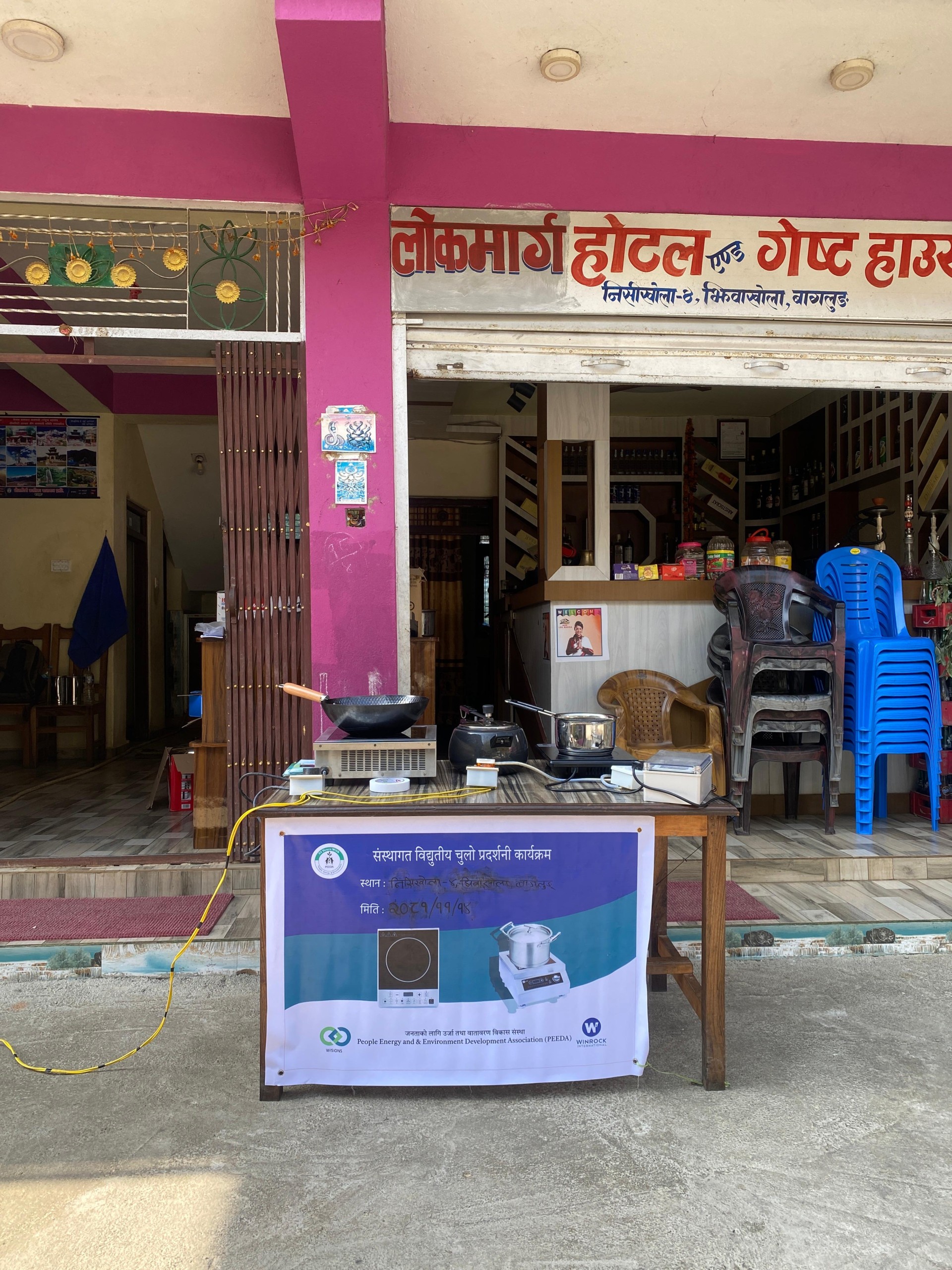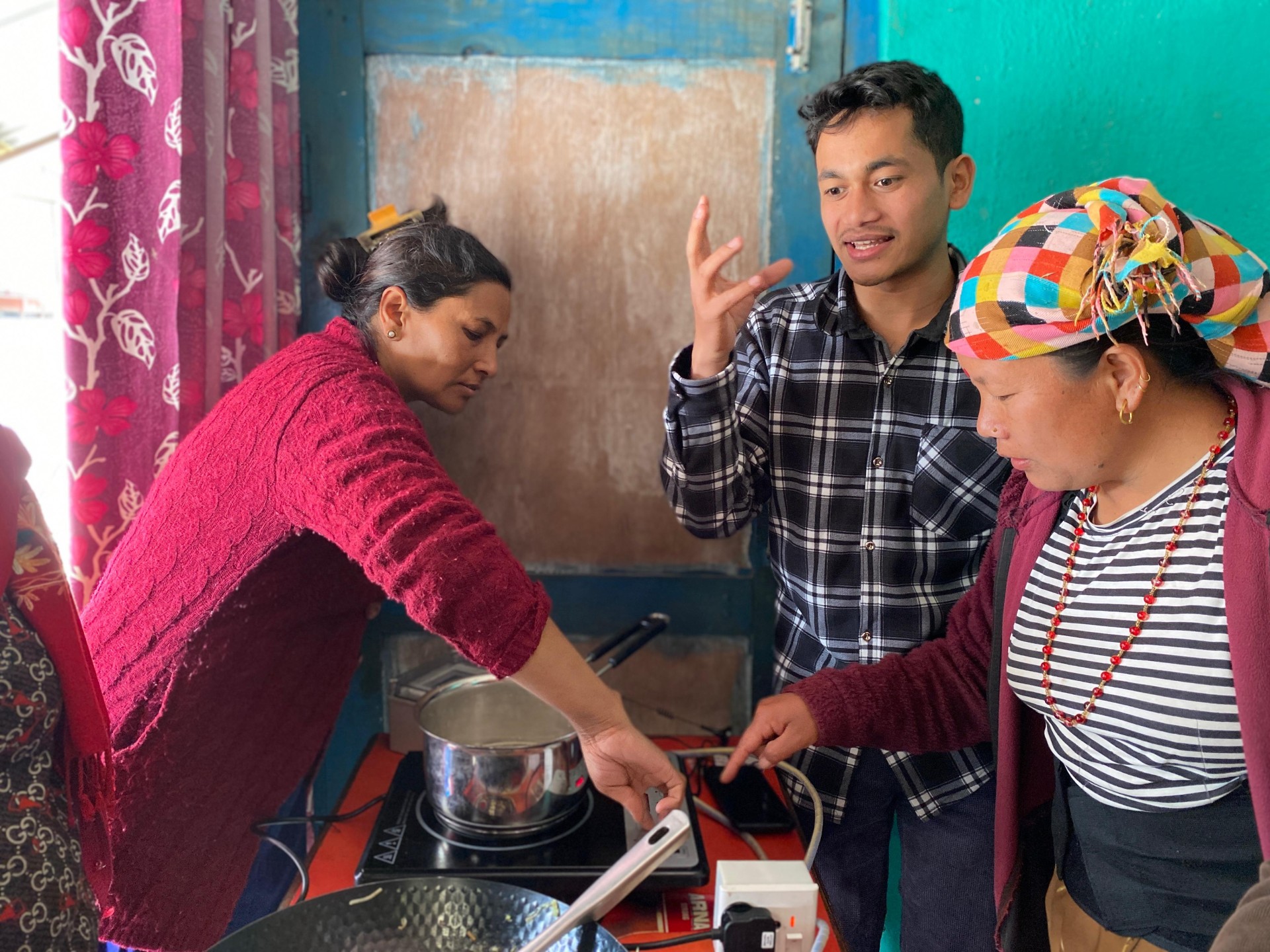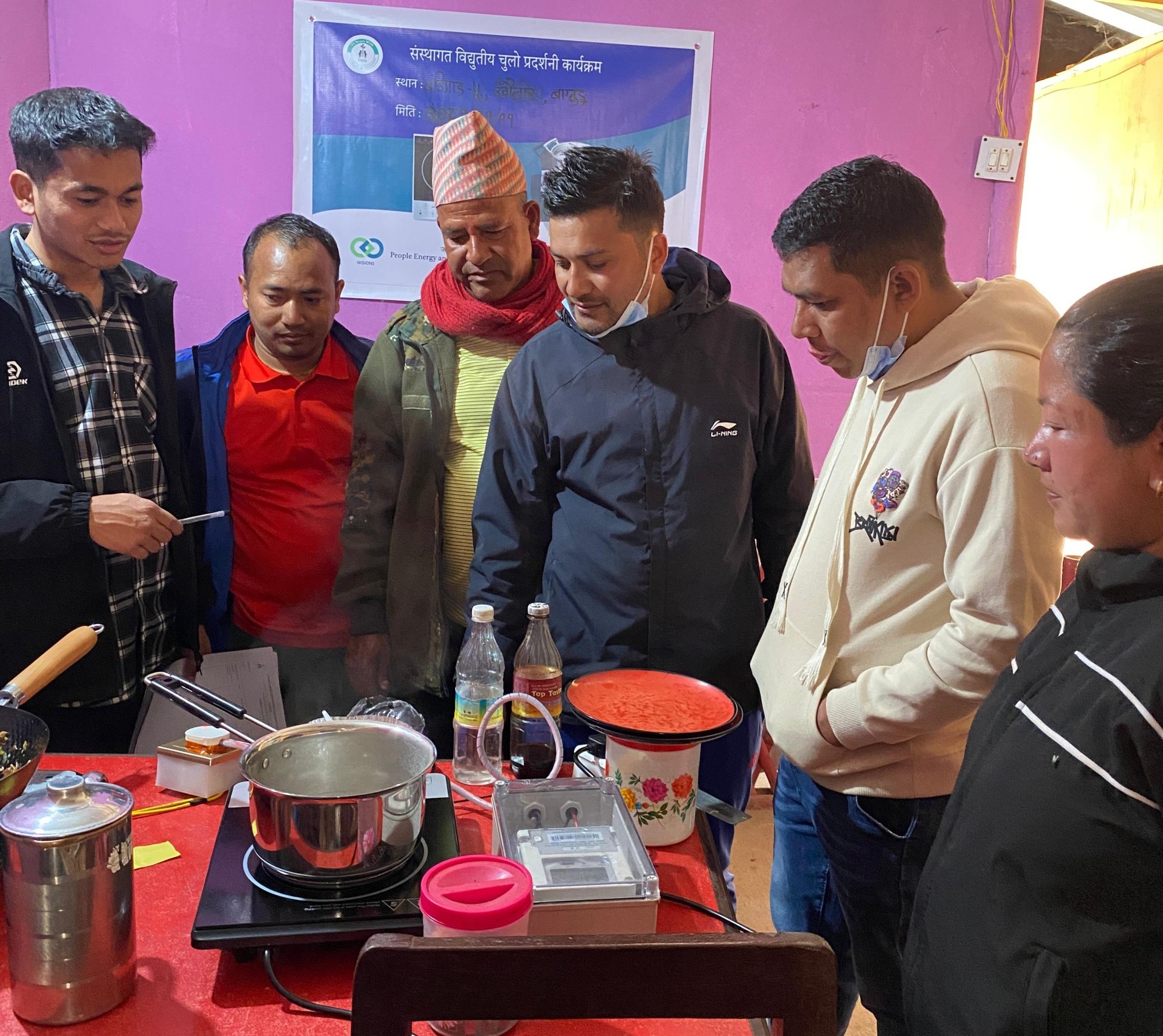In Trelew, Chubut, the students from the local Technical School have installed a new wind-solar hybrid system, capable of providing opportunity for energy self-sufficiency in the rural community.
E-cooking for SMEs – Insights from our Demonstration Campaigns
by: Nabin Shrestha (PEEDA)
Rural Nepal holds great promise for electric cooking, offering both cost and time savings. Switching to e-cooking can reduce fuel expenses and eliminate the need to gather firewood. People also don’t have to burn firewood or endure exposure to smoke, leading to improved health. Areas with a high penetration of micro-hydropower (MHP) have an added advantage, as many rural MHPs operate at low load factors, leaving much of their potential untapped. Increased adoption of electric cooking can help utilize this surplus energy, boosting demand and enhancing the efficiency of MHPs.
Eateries and restaurants make up a significant part of the local economy in rural towns and villages in Nepal. While considerable efforts have been made to promote electric cooking in the domestic sector, the inclusion of commercial food establishments in such initiatives remains limited. This sector presents important potential to drive the broader transition towards electric cooking in Nepal in general, and in rural municipalities in particular. Exploring this potential is one of the specific aims of the WISIONS Innovation Lab Nepal. To this end PEEDA is leading a research process in the Badigad and Nisikhola rural municipalities (RMs) of Baglung district. As part of this effort, the PEEDA team recently organised electric cooking demonstration campaigns in the project areas to familiarise entrepreneurs with electric cooking technologies and their benefits. In this blog, we share key insights and community perceptions of institutional electric cooking gathered through these demonstration campaigns.

Current analysis during cooking

Arrangement for demonstration campaign
The campaign included five demonstrations in Badigad and four in Nisikhola. A total of 28 small hotels and restaurants located along the Mid-Hill Highway within these two rural municipalities participated in the program. The appliances used in the demonstration included a 1900 W induction cooktop, intended for small hotels, a 3500 W induction cooktop, suited for relatively larger establishments, and various induction-compatible cookware like pressure cookers, kadhais, milk pans, etc. in different sizes to meet most of the cooking needs of these businesses.

Cooking daal and rice with a 3500 W induction cooktop
During the demonstrations, participants were given a brief overview of electric cooking, the available technologies and the benefits of transitioning to electric cooking. This information was supplemented by the distribution of flyers and brochures. Participants also received hands-on training in the preparation of common local dishes such as chow mein, rice, daal and meat. Among the nine demonstrations, one was conducted at Prabha secondary school, where the kitchen staff were trained to prepare a mid-day meal using a 3500 W induction cooktop.
After the participants had the opportunity to cook with electricity and taste the food, they were invited to share their experiences and comment on the suitability of electric cooking for their businesses. Most of the participants agreed that electric cooking – particularly with induction cooktops – can be just as fast as traditional cookstoves, such as those using LPG. They were also convinced that food cooked with electricity tastes similar to food cooked with LPG or firewood. This was positive feedback, as PEEDA had previously encountered cases where some users reported that food cooked with electricity tasted different from that cooked with firewood or LPG, which initially resulted in a somewhat unpleasant experience.

Participants cooking meat and vegetables during the demonstrations
However, some participants were concerned about the suitability of these appliances in their specific settings. These concerns primarily revolve around inconvenience, and the need to adapt existing habits. Krishna Pun, a hotel owner from Khaular, Badigad, shared his thoughts:
“People usually come in groups and are often in a hurry. So, we always have to cook and serve quickly. Our cooks are used to LPG stoves which have a metallic body and are quite robust against physical contact with utensils. Since induction cooktops have a smooth and delicate surface, I am afraid that they will break in a short time or that our cooks will struggle to adjust to the delicacy of this appliance. Also, it seems to me that the cooktop requires a dedicated space, which is hard to manage, because my kitchen space is already very congested.”
Hana Chhantyal of Nisikhola was worried that installing an induction cooktop along with induction-compatible utensils would render her existing cookware obsolete. “I already have so many aluminium utensils,” she said. “And since induction cookers doesn’t work with aluminium, I am concerned that all of my old utensils will become practically useless.” Proposing an unconventional idea, she even asked us if it might be possible to use an iron or steel plate as a heating base for her aluminium cookware on the induction cooktop.

Demonstrations with a group of participants
People’s perceptions of electric cooking also varied based on their prior experience of the technology. Those who had previously owned some kind of e-cooking appliance – such as electric pressure cookers (EPCs) or rice cookers – remarked that e-cooking helps save both time and money. In contrast, those who were completely new to this technology expressed that they would only develop trust and confidence once someone in their community used these appliances consistently for several months and demonstrated clear financial and social benefits. This highlights the crucial role that word of mouth and real-life examples play in promoting new technologies within rural communities.
Another major objective of these campaigns was to understand people’s willingness to pay (WTP) for electric cooking technology. After the demonstrations, we informed participants about the appliances and cookware they would receive during the intervention phase, along with the total market price of the package. They were then asked to indicate the amount they would be willing to contribute.
This was a new experience for both the participants as well as for us, as most of the subsidised projects offer a pre-defined subsidy percentage to the target users. When users are unfamiliar with the technology, collecting the WTP data becomes even more challenging. As a result, only 12 out of 28 participants provided an amount they would be willing to contribute.

Demonstrations with a group of participants
An interesting scenario unfolded at Putali Bazar, Nisikhola, where a group of hotel owners discussed among themselves and collectively agreed to propose a minimum contribution amount, hoping to secure the maximum possible subsidy. Consequently, the WTP amounts from this group of participants ranged from only 20% to 30%, whereas most of the other participants indicated a willingness to pay around 50%.
These demonstration campaigns were a much needed effort to understand the attitudes of food establishments towards electric cooking, and the challenges involved in the e-cooking transition within Nepal’s commercial, industrial, and institutional sectors. They provided us with fresh perspectives on these challenges and valuable insights to guide future directions. One key insight was that cooking requirements vary significantly between domestic and commercial settings, meaning that a one-size-fits-all approach would not be effective. For instance, commercial kitchens need cookers that are more physically robust and cook faster. Additionally, we found that trust in electric cooking technologies remains a major barrier. This highlights the need for pilot implementations that can effectively demonstrate the financial and social benefits, allowing potential adopters to better understand the long-term benefits before making a full transition.
Here you can find more about the Innovation Lab Nepal project!


